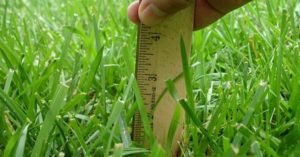Should You Remove Grass Clippings
 Whether to leave clippings on the lawn or to pick them up is a question of many gardeners. There are advantages and disadvantages to leave in grass clippings on your lawn, depending on the type of grass you have and how well you maintain it.
Whether to leave clippings on the lawn or to pick them up is a question of many gardeners. There are advantages and disadvantages to leave in grass clippings on your lawn, depending on the type of grass you have and how well you maintain it.
Leaving clippings of cool season grasses on the lawn does not cause or contribute to thatch buildup. It is the woody, slow to do decompose stems below warm season grass blades that contributed most to thatch build up.
Clippings and Nutrients
Clippings return nutrients to the lawn. Although it is difficult to measure, some estimates suggest that as much is 1/3 of the nitrogen requirement of a lawn can be supplied by decaying grass clippings.
At certain times, however, it makes sense to remove clippings from your lawn. First of all, clippings can be unsightly. They are removed from any intensely maintain lawns for just this reason. Secondly, if you do not mow your lawn frequently enough you will cut off too much grass at one time. If clippings mat down and block the sun from the lawn remove them so only a light cover of clippings remain.
Some people remove clippings to use as a composter mulch in a vegetable garden. This is fine provided their free of two, 4D another broad leaf herbicide. Continually mulching tomatoes with herbicide treated clippings for example, has resulted in distorted plants. Also, watch the weeds in the clippings, they can create havoc in your garden.
To remove clippings from your lawn, use a steel tine lawn rake after mowing. The tines are made of spring steel and snap back into position even when bent back. Do not substitute a steel wire leaf rake for collecting clippings. It’s wire tines are more likely to tear the grass. An easier solution is to purchase a grass catcher bag for your lawn mower.
You can follow any responses to this entry through the RSS 2.0 feed. You can leave a response, or trackback from your own site.


Leave a Reply